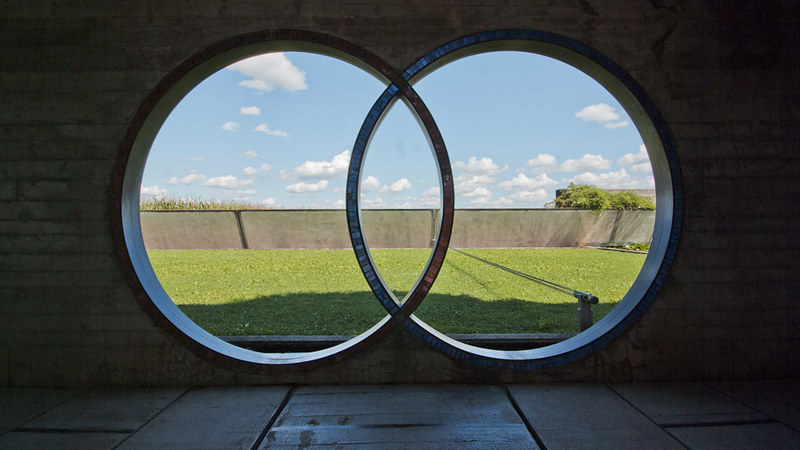The 'Definitive' Carlo Scarpa
Yesterday the Graham Foundation announced "over $560,000 in new grants to individuals around the world to support 72 innovative projects engaging original ideas in architecture." On my first skimming of the list of exhibitions, film/video/new media projects, public program, publications, and research, one award stood out above the rest: Francesco Dal Co's "definitive book on Carlo Scarpa."
The Italian architectural historian has authored books on Scarpa already, including his Complete Works (Rizzoli, 1986) and a case study of Villa Ottolenghi (Monacelli Press, 1998). Yet even with the numerous other monographs on the architect (most recently Robert McCarter's Carlo Scarpa published last year by Phaidon), Dal Co's forthcoming book from Yale University Press sounds very promising.

[Brion-Vega Cemetery, San Vito d'Altivole, 1978 | Photo: Francesco Maria Gabriele Vozza]
The description from the Graham Foundation website (my emphasis):
The Italian architectural historian has authored books on Scarpa already, including his Complete Works (Rizzoli, 1986) and a case study of Villa Ottolenghi (Monacelli Press, 1998). Yet even with the numerous other monographs on the architect (most recently Robert McCarter's Carlo Scarpa published last year by Phaidon), Dal Co's forthcoming book from Yale University Press sounds very promising.

[Brion-Vega Cemetery, San Vito d'Altivole, 1978 | Photo: Francesco Maria Gabriele Vozza]
The description from the Graham Foundation website (my emphasis):
As the definitive book on Carlo Scarpa (1906–1978), this important study surveys the wide-ranging body of his architecture and design work, including buildings, works in glass, and exhibition designs. After graduating with a degree in architectural design, Scarpa began his multi-faceted career with an apprenticeship at the Murano glass factory, Cappellin & Co., while simultaneously embarking on his first architectural commissions. His commitment to craftsmanship and his evolving modernist style, which engaged in dialogue with his contemporaries, including Frank Lloyd Wright and Louis Kahn, is exemplified by buildings ranging from the small Olivetti Showroom in Piazza San Marco, to the monumental Brion Tomb, outside of Treviso. Although Scarpa's work is concentrated in the Veneto region of Italy, it has become increasingly influential on the world stage. This sensitive account will be instrumental in correcting many long-held assumptions about Scarpa's work while illustrating how and why his designs continue to inspire.
Comments
Post a Comment
Comments are moderated for spam.